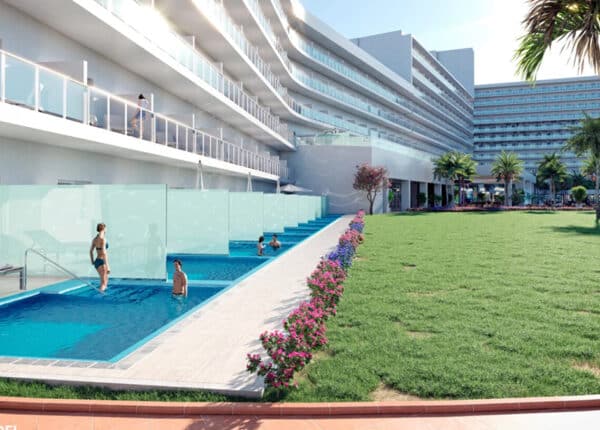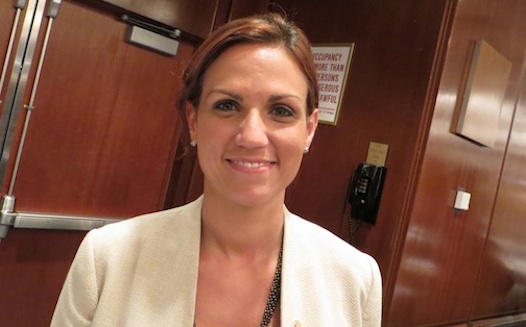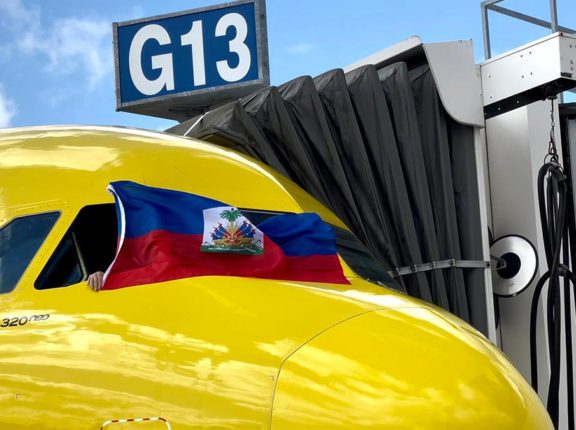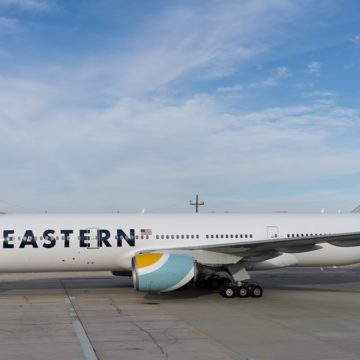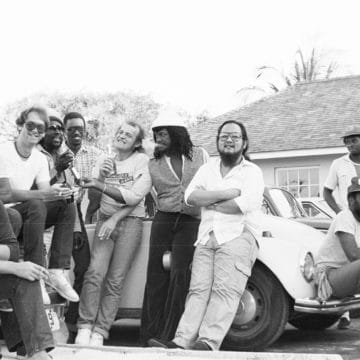Interview with Haiti Tourism Minister Stephanie Villedrouin on Remaking Haiti’s Brand
By Alexander Britell
Haiti’s tourism sector is beginning again. Two years since the earthquake, new hotels are beginning to pop up, new hospitality students are being trained and destinations like Jacmel are entering the consciousness of international travelers. While it’s a long road ahead for Haiti as it seeks to remake its image abroad, it’s one Tourism Minister Stephanie Villedrouin seems to relish. Villedrouin began her hotel career studying in the Dominican Republic. After returning to Haiti in 2004, she worked at a hotel for five years, then joining the Tourism Association of Haiti as a board member. Next, she advised President Michel Martelly’s office on tourism until eventually being asked to serve as a cabinet minister. To learn more, Caribbean Journal talked to Villedrouin about the growth of new foreign hotels in the country, the development of the local Haitian hotel industry and the future of tourism in Haiti.
Where is Haiti’s tourism sector right now?
We have a new logo that we launched, and it’s the new image of the country. When you try to change the image of the country, you have to start by identifying the country differently. And that’s what we did — we did a whole competition to find the best logo for the country, and it went very well, and now we’re very proud to showcase this new image, with a new sightseeing in Haiti that has never been promoted before. Because unfortunately, it’s always the bad part of Haiti that has been promoted, especially after the earthquake.
How do you see Haiti’s brand changing?
It’s like everybody was waiting on it. Everybody was waiting to see Haiti moving forward and taking the lead. So when we decided to do it, everybody gathered with us and said, “let’s do it.” And they all participated very well. And now it’s already starting to change — I see people using it on their blogs, on their Facebook pages, on Twitter, and all this is important for us, because you need to feel identified with the new logo of the new destination. And where Haiti is now, Haiti has a total of 3,000 rooms. We have clusters all around the country, two clusters in the south, one cluster in the north, one cluster about an hour and a half from Port-au-Prince, and you actually have hotels there. What we’re putting together is to create small packages to attract clients — not in one year, but tomorrow. So we’re starting something, and I have to say that the clientele is accepting very well our new packages. With all of the actions we’re putting in place, we’re very open. We talk out what we’re doing. So people don’t just see the talking but they see action. So we’re going to inaugurate the restoration of the international airport in Port-au-Prince at the end of July. I’m going to have a whole stand of information for tourists, so when visitors come they can find information about where to go, what to do. The idea is to guide the tourists — they need guidance, they need information. My job is to team up with the private sector to give them this information.
How much new hotel development is going on?
We have some very nice hotel developments, especially in Port-au-Prince. We have hotels being built as we speak, opening at the end of this year and at the beginning of next year. You’re going to have the Best Western with 108 rooms, the Occidental Oasis, which is a Spanish brand, the NH, which is also Spanish, you’re going to have the Marriott, which signed with us last November and will start building in December. And Hilton is interested, Choice Hotels is in Jacmel, so it’s interesting to see that from the “mom and pop” hotels we used to have we’re now really entering the professional aspect of it. And for me, it’s important for the image, because the client, when he decides to come to Haiti, and knows that we have a Best Western or an Occidental, it reassures the client that when he arrives he’ll find a good room. And our private sector, the Haitian private sector, did a lot of effort in building nice hotels. They went to take seminars to make sure the quality of the infrastructure was internationally acceptable. So we’re very confident and moving forward, and the idea is to reposition Haiti this year and in the beginning of next year as a destination in the Caribbean. Of course, the idea is to create some regional development with resorts, and we have already identified our two regional tourism poles: one in the north and one in the south. I’m currently working with FONATUR [Mexico’s National Trust of Tourism Development], which will help us with the technical assistance to do our master plan. Because we don’t want to develop the sector without a master plan.
Jacmel seems to be an emerging tourism centre. Where does Jacmel fit within Haiti’s tourism policy?
Jacmel is not only a cultural centre, it has a lot of artisans, and a lot of natural sites around it. It’s a small town, and you really can create nice packages around this town. The government is investing $40 million in Jacmel. We’re going to do the whole historical centre. Because there’s a tourist port that we’re going to reestablish, and we’re really working with Carnival to do a south route. (RCL does the northern route in Labadie) We’re talking to them, and the idea is that when the visitor comes, he can just walk in the historical centre that will have gift shops, restaurants, and really recreate something nice out of Jacmel. What is interesting this time is the government is not only saying that it believes in tourism, but it is investing in tourism. And that, I think, is a great signal for investors, because when they see the government is committed on what it is saying, it means it is welcoming investment. Because we cannot develop a country without the private sector. We need these funds to develop the country, so we’re very open to doing some public and private partnerships to manage the facilities, to manage the airports. We just want results for the population of Haiti.
We’ve seen a number of foreign companies investing in new hotels in Haiti. How do you see the domestic Haitian hotel industry developing?
When the local operators saw the new hotels come in, they also invested in their hotels. So that was a good signal. We have hotels like Kinam, a classic, which is now investing in 100 new rooms in his hotel. We have the Ibo Lele, a 70-year old hotel, which is converting from a standard hotel into a boutique hotel. So I really like the synergy that this new investment brought to Haiti. Because now even the Haitian private sector is saying, “hey, if they’re coming, they’re going to grab part of my market, so I have to work more on my services, I have to work more on what I’m giving to the tourists.” And I think that creates a good energy. One of our challenges is the correct training in human resources. Because Haiti was not really a country that had a hotel industry. It was very artisanal, it was not a real industry. So they never really invested in hotel schools. So there’s only one school that we have in Port-au-Prince that I did a partnership with ITHQ, the hotellerie of Quebec, to renew our curriculum that was completely not updated. So now I have a new curriculum, and I’m really counting on the Haitians that left [the country] to study, and I’m trying to gather them and tell them, “listen, we need your help to return to the country and train your sisters and brothers.” So we’re in that process, and I have five that are coming this summer, because we have a major vocational training that we’re putting in place for current employees in the sector.
Tourism accounts for the largest proportion of GDP in Caribbean economies. What kind of impact can it have on Haiti?
We don’t have the information on the impact yet, because we haven’t had the statistics yet. But we’re studying it. Definitely, it’s a major, major economic base for all of the Caribbean. And what is interesting is that Haiti has the same natural size, the same nice beaches, the same mountains, and one of the things that I could say that adds value is our culture. It’s a very creative, very creative population, with a lot of talent. And they create out of nothing. I know tourists like to come and see not just artisans doing sculptures, but they like to buy the sculptures. Because Haitian arts and crafts are known all over the world now. You have the food, which is excellent — and it’s not just because I’m Haitian. We were colonized by the French, and the French cuisine is delicatesse. So we have the mix of Creole food and the French food. We have music, and our population is a very welcoming population, always with a smile in all the provinces. And we really want to bring tourism to that level. With all the incomes that will bring to our economy, we can actually promote and work on social aspects and the needs of the population. We don’t have to take only for the five years of the [President’s] mandate — we haven to think of Haiti in 2015, in 2050 where we will be.
So where do you see Haiti’s tourism by 2015?
By 2015, Haiti has to be in all of the brochures, all of the tour operators’ brochures, it has to be in all the magazines of the Caribbean. We will be present in all the tourism fairs to continuously promote the country. Because it’s not an end story. You always have to continuously promote the country. I see my country as being a new destination in the Caribbean. We are really looking forward to 3,000 new rooms by 2015, to double our rooms by 2015. So it’s a very reasonable amount. But most importantly is the master plan that we’ll leave. The idea is to give back the structure, to put the structure in place so we can be a new, developed country in 2030.
